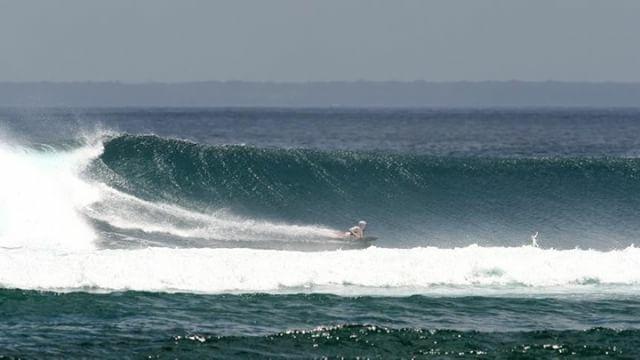
I really like bellyboarding! When I first started riding these boards in 2005 wondered why nobody else surfed boards like these. I could not believe how much fun I was having! I had made replicas of the boards I studied in the Bishop Museum, and knew the Ancient Hawaiians reveared these boards, but had any other cultures appreciated them? Linking up with fellow wood bellyboarders I learned that one hundred years ago there were tens of thousands of wood bellyboarders around the world. They were popular in Japan, UK, South Africa, through the Pacific and Papua New Guinea. People have been enjoying bellyboards for a very long time. I found my surfing world opened up dramatically when I started bellyboarding on wood. All of a sudden new catagories of surf, which are not good for stand up surfing, were great fun for bellyboards.




Alistair Braken and I enjoying a little summer bank on the surfies. photos @jessicaemily_photography
My original surfie has evolved into three different designs; the surfie, the corky surfie and the big wave surfie.
The surfie
The surfie is a one size fits all body board designed for small to medium surf. It is 4’ thin, light and flexible so the energy of the wave resonates through the board and is passed on to you. Surfing one is like bodysurfing except you go really fast. As you ride across waves you can push down on the nose to accelerate and pull up to turn. The feeling is addictive and I have surfed this board far more than any other shape I have made over the past decade.
With the corky method, I have slightly evolved the shape of the surfie from the surfies in the videos. Before I was making flat boards by gluing lengths of wood horizontally by their edges. Now I am laminating four sheets of 2mm wood vertically. This makes for a stronger, lighter board with a lifted nose and a concave through the tail. The lifted nose gives more control in turning the board and the concave lets you catch waves easier.
The Corky Surfie
The corky surfie has more buoyancy than the other surfies because it has a thin layer of EPS foam covered by a layer of cork. I can make them from 4' to 4'6 and the thickness can vary from one to two inches. It is for weaker waves and for swimming out further with fins.
In my mind, the difference between the surfie and the corky surfie comes out when looking at the waves I am going to surf. If the waves are powerful and breaking in waist deep water or less, I will use the surfie. If the waves are breaking in deeper water, over waist deep, then I will want the extra buoyancy and surface area of the corky surfie.

Gus O'Mally can stand on a corky surfie
The big wave surfie
This is a stiffer surfie which will hold an edge in big surf. In the middle of the board there is a thin layer of XPS foam and on the top and bottom there are two layers of 2mm paulownia veneer. The thickness of the foam in the middle determins the regidity. The thicker the foam layer the more ridged and the thinner the more flexible.


Final thoughts on bellyboarding

Charmain, 86 years old in this photo, has found the foutain of youth in bellyboarding.
The inspiration for the surfie comes from the UK. I was invited to the World Wood Belly Board Contest and met a world of surfers who had been riding thin wood boards for years. Most of them were over 60 years old and the belly board had kept their surf stoke alive for decades. I met a very nice, core surfer named Charmain who was celebrating her 86th birthday. She had been surfing the thin wood body board for probably 70 years and her smile says it all. In the cold Cornwall surf she explained to me how to properly catch a wave. You wade out into about waist deep water. You wait for a wave to come to you and when it is about 10 feet away you turn around and face the shore. Just as the wave pushes against your bottom, you jump up and then lean forward onto your board. You catch the wave with ease. I have been following her advice ever since and it works! am hoping to bring the stoke of the UK belly boarders to Australia. There are so many small days that are not so good for stand up surfing but are the best for the thin wood boards.
One more thing about the Surfie; it will keep your stoke as you get older. Getting old is something we do if we are lucky. I feel so sad for many older surfers who think they cannot enjoy surfing any more because they cannot stand up on a surfboard. I can relate to them. I have had problems with my knees and hips and they freeze up. This is no reason to stop surfing. I have met several older surfers who feel the same joy on a belly board as they used to feel on a regular board.
The following little video is a wave I caught when there had not been waves in weeks, but I found one bank pulling in just a couple of ridable waves. I was so stoked after I caught this wave!


